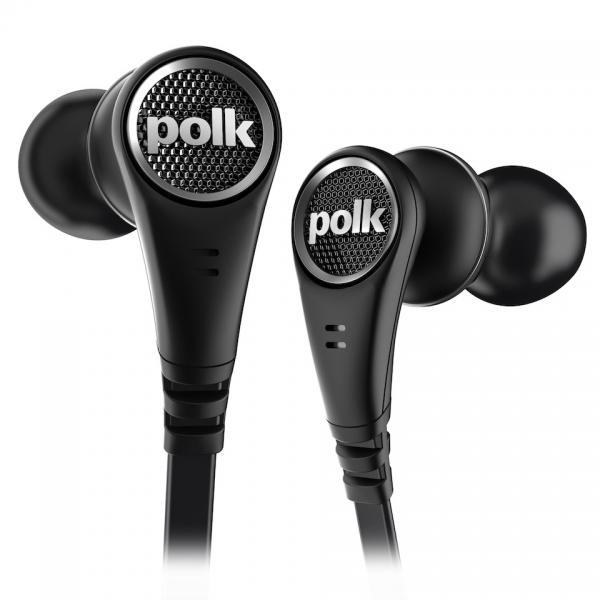Review: Polk Audio UltraFocus 6000

I’m happy to see Polk getting into one of the headphone world’s neglected nether realms: noise-canceling IEMs. The UltraFocus 6000 gives you the easy transportability of an IEM with the noise-canceling technology that’s popular on larger over-ear and on-ear models.
The 6000 uses a “half in-ear” design like that found on Phiaton’s IEMs. A large chamber partially occludes the ear canal, and a smaller cylinder enters the canal. I find this design comfortable, secure, and conducive to a great fit, but some enthusiasts disagree. Seven different silicon and foam tips are provided for a better chance of getting a good fit.
A small “lump in the line” contains the NC circuitry and a single AAA battery. The lump has a -10-dB attenuation switch plus a button that activates an onboard microphone so you can hear ambient sound. These features will come in exceptionally handy when you need to converse with the flight attendant or hear the bus driver announce the next stop. The 6000 won’t work with the NC circuitry switched off or when the battery runs down, which is disappointing. A semi-hardshell case is included.
I found the 6000’s tonal balance to be pleasing. On “Birks Works” from Art Pepper Meets the Rhythm Section, everything from Paul Chambers’s bass to Pepper’s alto to Philly Joe Jones’s cymbals sounded even. There were a few anomalies — a little boost in the highs around about 5 kHz, a little apparent softness in the midrange around 1.5 kHz — but overall its sound was nice. Greg and Lauren had a tougher time with its sound, though; they both found the bass too pumped up, and the treble subjectively muted as a result.
For frequent fliers, the noise-canceling IEM form factor is a winner, and the UltraFocus 6000 is one of the nicest designs on the market. Whether or not its sound works for you will be a matter of taste, so if possible, try before you buy.
Test Bench
The UltraFocus 6000 shows a mild, broad bass boost with peaks at 4.8 and 8.6 kHz — pretty much standard response for a neutral-sounding headphone. Increasing output impedance to 75 ohms has no effect on frequency response. The NC circuitry reduces noise by -10 to -22 dB between 150 Hz and 1.4 kHz, which is very good performance. Distortion at 100 dBA is under 0.4% above 350 Hz, but has an unusual peak at 8.8% at 305 Hz and rises to 2.4% at 20 Hz. Average sensitivity from 300 Hz to 10 kHz with a 1-watt signal at 32 ohms impedance is 99.7 dB.


























































